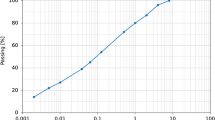Abstract
A growing need for building materials and an increasing demand for the analytical calculation of structures mean that data are required about materials which were traditionally used on an empirical basis. This is true for Egyptian reed, and tests are reported on its uniaxial tensile and compressive strength, and its static and impact bending strength.
Resume
En raison de l'accroissement des besoins en matériaux de construction et de la demande de calculs analytiques des structures, des caractéristiques sont exigées pour les matériaux, y compris pour ceux qui étaient traditionnel-lement utilisés de façon empirique. Ceci est vrai pour le roseau égyptien. Un programme d'essais a permis de déterminer sa résistance uniaxiale à la traction et à la compression, sa résistance statique et sa résistance à la flexion par choc. Le matériau testé(Arundo phragmite), en provenance d'Egypte, a été pré-stocké sous trois conditions d'humidité différentes: saturé à chaud, à température ambiante, et séché à l'étuve. La résistance à la traction moyenne a été d'environ 118 M Pa, la résistance à la compression de 45 M Pa, la résistance à la flexion de 28 M Pa et l'effort de rupture au choc de 43 kJ m−2. La présence de noeuds dans les roseaux s'est avérée importante pour la résistance à la traction et à la flexion, et moindre pour la résistance à la compression et au choc. On a constaté qu'une augmentation de l'humidité réduit la résistance à la flexion, tandis que la résistance à la traction atteint son maximum au stockage à température ambiante. L'influence de la densité apparente sur la résistance à la compression est faible, tandis que la résistance à la flexion s'accroît avec une densité apparente croissante.
Similar content being viewed by others
References
Hellal, A., ‘Vanacular Architecture in Egypt’. Analytical study of reed architecture in Manzala Lake Region (Helwan University, 1989).
Salahi, M. H., ‘Festigkeitsuntersuchungen an ägyptischem Reet’, Diplomarbeit Universität Stuttgart, Fakultät 2, February 1994.
Graf, O., ‘Baustoffe und ihre Eigenschaften’, in ‘Taschenbuch für Bauingenieure’, 2 Aufl., 1 Band (Springer-Verlag, Berlin, 1955) pp. 391–476.
Dunkelberg, K., ‘Bamboo as a building material’, Institute for Lightweight Structures (IL), Stuttgart University, IL31, 1985, pp. 46–260.
Author information
Authors and Affiliations
Rights and permissions
About this article
Cite this article
Reinhardt, H.W., Salahi, M.H. & Schatz, T. Strength of reed from Egypt. Materials and Structures 28, 345–349 (1995). https://doi.org/10.1007/BF02473150
Issue Date:
DOI: https://doi.org/10.1007/BF02473150




